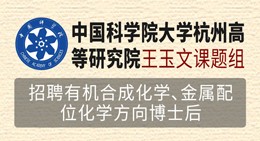当前位置:
X-MOL 学术
›
J. Ethnopharmacol.
›
论文详情
Our official English website, www.x-mol.net, welcomes your
feedback! (Note: you will need to create a separate account there.)
Integrating UHPLC-Q-TOF-MS/MS, network pharmacology, bioinformatics and experimental validation to uncover the anti-cancer mechanisms of TiaoPi AnChang decoction in colorectal cancer
Journal of Ethnopharmacology ( IF 4.8 ) Pub Date : 2024-07-14 , DOI: 10.1016/j.jep.2024.118576
Yantong Guo 1 , Chunsheng Yuan 1 , Ting Huang 2 , Zhiqiang Cheng 3
Journal of Ethnopharmacology ( IF 4.8 ) Pub Date : 2024-07-14 , DOI: 10.1016/j.jep.2024.118576
Yantong Guo 1 , Chunsheng Yuan 1 , Ting Huang 2 , Zhiqiang Cheng 3
Affiliation
The TiaoPi AnChang Decoction (TPACD), a Traditional Chinese Medicine (TCM) prescription based on Xiangsha Liujunzi Decoction, has demonstrated clinical efficacy as an adjuvant therapy for colorectal cancer (CRC) patients. However, its specific ingredients and potential mechanisms of action remain unclear. To identify the primary active ingredients of TPACD, their molecular targets, and potential mechanisms underlying the efficacy of TPACD in CRC treatment. This study investigated the clinically validated TCM formula TPACD. and experiments were used to demonstrate TPACD's regulatory effects on various malignant phenotypes of tumors, providing basic research support for its anti-cancer activity. To understand its pharmacodynamic basis, we utilized ultra-high performance liquid chromatography-quadrupole-time-of-flight-mass spectrometry/mass spectrometry (UHPLC-Q-TOF-MS/MS) to analyze TPACD constituents present in the bloodstream. Network pharmacology and bioinformatics analyses were used to identify potential active components and their molecular targets for TPACD's therapeutic effects in CRC. Subsequent experiments further elucidated its pharmacological mechanism. TPACD inhibits various malignant cellular processes, such as cell proliferation, apoptosis, migration, and invasion, and has shown potential anti-CRC activities both and . Following the identification of 109 constituents absorbed into the blood from TPACD, network pharmacology analysis predicted 42 potential anti-CRC targets. Clinical analyses highlighted three genes as prognostic key genes of TPACD's therapeutic action: C-X-C motif chemokine ligand 8 (CXCL8), fatty acid binding protein 4 (FABP4), and matrix metallopeptidase 3 (MMP3). Drug sensitivity analyses, molecular docking simulations and reverse transcription-quantitative polymerase chain reaction (RT-qPCR) identified MMP3 as the most promising target for TPACD's anti-CRC action. Enzyme activity assays confirmed that TPACD inhibits MMP3 enzyme activity. Surface plasmon resonance (SPR) characterized the binding affinity between MMP3 and effective active components of TPACD, including luteolin, quercetin, kaempferol, and liensinine. TPACD exhibits anti-CRC activity and , with MMP3 identified as a critical target. The active compounds, including luteolin, quercetin, kaempferol, and liensinine, absorbed into the bloodstream, contribute to TPACD's efficacy by targeting MMP3.
中文翻译:

结合UHPLC-Q-TOF-MS/MS、网络药理学、生物信息学和实验验证揭示调皮安肠汤抗结直肠癌的抗癌机制
调皮安肠汤(TPCD)是一种以香砂六君子汤为基础的中药方剂,作为结直肠癌(CRC)患者的辅助治疗已显示出临床疗效。然而,其具体成分和潜在作用机制仍不清楚。确定 TPCD 的主要活性成分、其分子靶点以及 TPCD 治疗结直肠癌疗效的潜在机制。本研究调查了经过临床验证的中药配方 TPCD。并通过实验证明了TPCD对肿瘤多种恶性表型的调节作用,为其抗癌活性提供了基础研究支持。为了了解其药效学基础,我们利用超高效液相色谱-四极杆-飞行时间质谱/质谱 (UHPLC-Q-TOF-MS/MS) 来分析血液中存在的 TPCD 成分。使用网络药理学和生物信息学分析来确定 TPCD 对 CRC 治疗作用的潜在活性成分及其分子靶点。随后的实验进一步阐明了其药理机制。 TPCD 可抑制多种恶性细胞过程,如细胞增殖、凋亡、迁移和侵袭,并显示出潜在的抗 CRC 活性。在鉴定了 TPCD 吸收到血液中的 109 种成分后,网络药理学分析预测了 42 种潜在的抗 CRC 靶点。临床分析强调了 TPCD 治疗作用的预后关键基因的三个基因:CXC 基序趋化因子配体 8 (CXCL8)、脂肪酸结合蛋白 4 (FABP4) 和基质金属肽酶 3 (MMP3)。 药物敏感性分析、分子对接模拟和逆转录定量聚合酶链反应 (RT-qPCR) 确定 MMP3 是 TPCD 抗 CRC 作用最有希望的靶点。酶活性测定证实 TPCD 抑制 MMP3 酶活性。表面等离子共振 (SPR) 表征了 MMP3 与 TPCD 有效活性成分(包括木犀草素、槲皮素、山奈酚和莲心素)之间的结合亲和力。 TPCD 具有抗 CRC 活性,并且 MMP3 被确定为关键靶点。活性化合物,包括木犀草素、槲皮素、山奈酚和莲心素,被吸收到血液中,通过靶向 MMP3 来提高 TPCD 的功效。
更新日期:2024-07-14
中文翻译:

结合UHPLC-Q-TOF-MS/MS、网络药理学、生物信息学和实验验证揭示调皮安肠汤抗结直肠癌的抗癌机制
调皮安肠汤(TPCD)是一种以香砂六君子汤为基础的中药方剂,作为结直肠癌(CRC)患者的辅助治疗已显示出临床疗效。然而,其具体成分和潜在作用机制仍不清楚。确定 TPCD 的主要活性成分、其分子靶点以及 TPCD 治疗结直肠癌疗效的潜在机制。本研究调查了经过临床验证的中药配方 TPCD。并通过实验证明了TPCD对肿瘤多种恶性表型的调节作用,为其抗癌活性提供了基础研究支持。为了了解其药效学基础,我们利用超高效液相色谱-四极杆-飞行时间质谱/质谱 (UHPLC-Q-TOF-MS/MS) 来分析血液中存在的 TPCD 成分。使用网络药理学和生物信息学分析来确定 TPCD 对 CRC 治疗作用的潜在活性成分及其分子靶点。随后的实验进一步阐明了其药理机制。 TPCD 可抑制多种恶性细胞过程,如细胞增殖、凋亡、迁移和侵袭,并显示出潜在的抗 CRC 活性。在鉴定了 TPCD 吸收到血液中的 109 种成分后,网络药理学分析预测了 42 种潜在的抗 CRC 靶点。临床分析强调了 TPCD 治疗作用的预后关键基因的三个基因:CXC 基序趋化因子配体 8 (CXCL8)、脂肪酸结合蛋白 4 (FABP4) 和基质金属肽酶 3 (MMP3)。 药物敏感性分析、分子对接模拟和逆转录定量聚合酶链反应 (RT-qPCR) 确定 MMP3 是 TPCD 抗 CRC 作用最有希望的靶点。酶活性测定证实 TPCD 抑制 MMP3 酶活性。表面等离子共振 (SPR) 表征了 MMP3 与 TPCD 有效活性成分(包括木犀草素、槲皮素、山奈酚和莲心素)之间的结合亲和力。 TPCD 具有抗 CRC 活性,并且 MMP3 被确定为关键靶点。活性化合物,包括木犀草素、槲皮素、山奈酚和莲心素,被吸收到血液中,通过靶向 MMP3 来提高 TPCD 的功效。

































 京公网安备 11010802027423号
京公网安备 11010802027423号